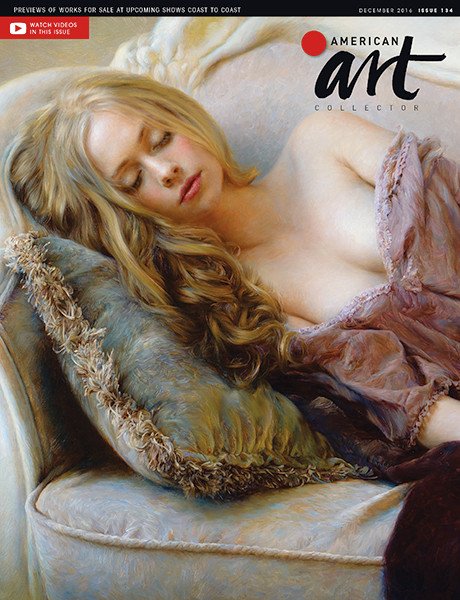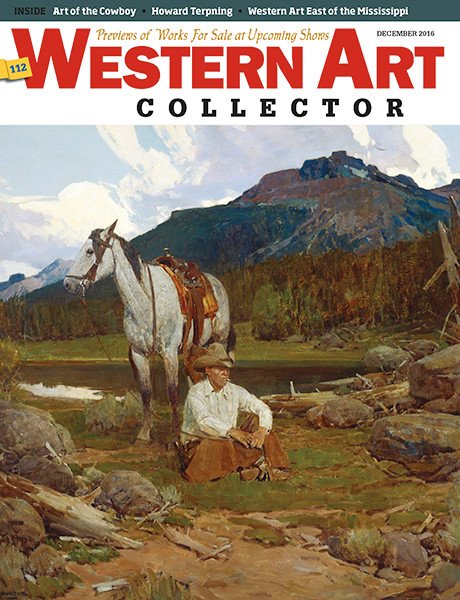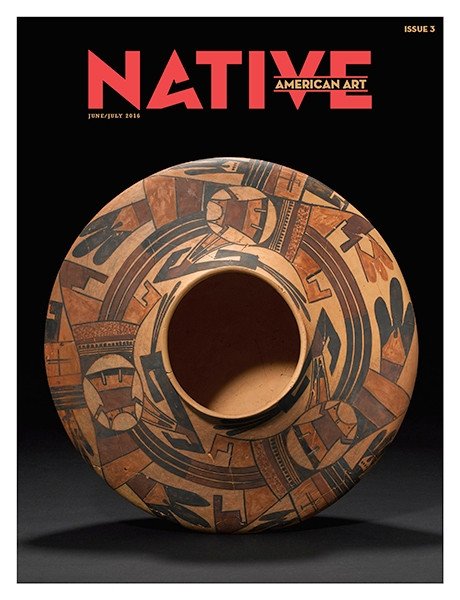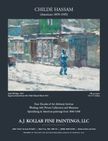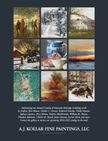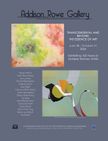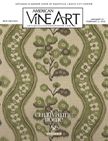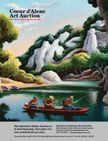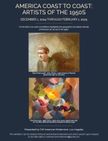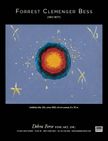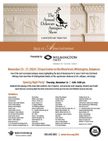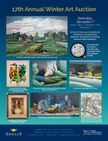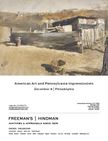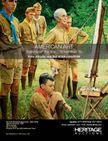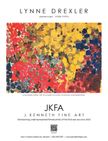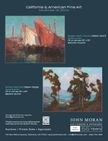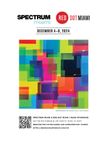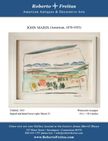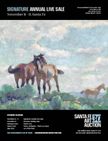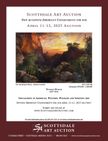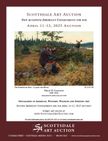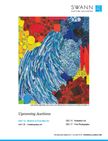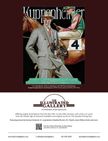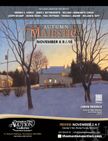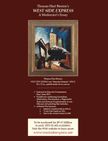Impressionism didn’t firmly take hold in America until the mid-1880s, by which time the radical nature of its emergence in France had dissipated, and the disdain with which it was met by the Western art world was replaced by acceptance and eventual embrace. There were American artists painting alongside the French Impressionists as early as the mid-1870s, notably Mary Cassatt who moved to Paris in 1874 where she caught the eye of Edgar Degas; and John Singer Sargent, who was studying in Paris at the same time, and would soon meet Claude Monet. But it was William Merritt Chase, with his 1886 series of New York City park scenes, who established himself as the first major American Impressionist painter.
 John Singer Sargent (1856-1925), Man Reading (Nicola d’Inverno), ca. 1904-08. Oil on canvas, 25¼ x 22¼ in. Museum Purchase 1948.35.1, Reading Public Museum.
John Singer Sargent (1856-1925), Man Reading (Nicola d’Inverno), ca. 1904-08. Oil on canvas, 25¼ x 22¼ in. Museum Purchase 1948.35.1, Reading Public Museum.
Chase is one of roughly 15 painters featured in American Impressionism: Inside/Out, on view at Pennsylvania’s Reading Public Museum through January 5, 2025. Spanning the 1870s through the 1920s, the exhibition features an entire generation of American artists whose work embodies the style that became known as Impressionism. Some of the works were painted by Americans who spent significant time in France and adopted the looser brushwork, brighter color palette and casual subject matter of their French contemporaries, and introduced the modern style to artists on this side of the Atlantic, who then carried it forward into the next century.
 John Singer Sargent (1856-1925), Landscape with Women in Foreground, ca. 1883. Oil on canvas, 25 x 30½ in. 125th Anniversary Acquisition, Gift of Joseph F. McCrindle 2002, 2002-49-1, Philadelphia Museum of Art.
John Singer Sargent (1856-1925), Landscape with Women in Foreground, ca. 1883. Oil on canvas, 25 x 30½ in. 125th Anniversary Acquisition, Gift of Joseph F. McCrindle 2002, 2002-49-1, Philadelphia Museum of Art.
As one of the most significant American art movements—marking a revolutionary break from many traditional academic art teachings—and most beloved styles of art, impressionism has been explored in countless books, films and exhibitions. The Reading Public Museum has managed to conceive of a novel approach for their presentation, by looking at interior scenes alongside plein air landscapes.
 William Merritt Chase (1849-1916), My Palette, ca. 1870-1880. Oil on canvas, 20 x 30 in. Museum Purchase, 1931.907.1, Reading Public Museum.
William Merritt Chase (1849-1916), My Palette, ca. 1870-1880. Oil on canvas, 20 x 30 in. Museum Purchase, 1931.907.1, Reading Public Museum.
“Reading Public Museum has a strong collection of American Impressionist works that have been part of the collection since the 19-teens, when we first started acquiring works of art,” says curator Scott Schweigert. “We are always looking for fresh ways to look at ‘old favorites,’ and it seemed to make sense to juxtapose works that explore plein air practice next to those that capture more elusive interior, filtered light.”
 William Merritt Chase (1849-1916), The Villa in Florence, (Italian Sunlight and Shadow), ca. 1909. Oil on canvas, 29 x 36 in. Private Collection, Reading, Pennsylvania.
William Merritt Chase (1849-1916), The Villa in Florence, (Italian Sunlight and Shadow), ca. 1909. Oil on canvas, 29 x 36 in. Private Collection, Reading, Pennsylvania.
In three cases, the museum has paired works by the same artist—both an indoor scene and an outdoor one—to invite contemplation of how setting influenced the handling of light and shadow, the subtleties of filtered interior light, use of color, as opposed to the effects of sunlight in the open air.
Pairs by John Singer Sargent, Chase, and Bucks County, Pennsylvania, impressionist Daniel Garber are included in the show to highlight the subtle differences between the approach and technique to capture the ephemeral quality of light and atmosphere.
“Objects in the interior views are described differently,” says Schweigert. “I’m struck by streaming sunlight entering through windows and thresholds and the soft highlights that fall on rims of ceramics or glass containers, or reflections off tabletops. Brushwork is often more controlled in the interiors and tends to loosen up with landscapes and open air compositions…While each artist has their own distinctive style, the works do share an interest in the materiality of paint—thick, bold brushstrokes and a bright color palette are inherent to most works included in the exhibition.”
 Daniel Garber (1880-1958), Morning Light, 1923. Oil on canvas, 30 1⁄16 x 25 1⁄8 in. Gift of Elise Robinson Paumgarten from the Sallie Crozier Hilprecht Collection, 1945, 1945-57-191. Philadelphia Museum of Art.
Daniel Garber (1880-1958), Morning Light, 1923. Oil on canvas, 30 1⁄16 x 25 1⁄8 in. Gift of Elise Robinson Paumgarten from the Sallie Crozier Hilprecht Collection, 1945, 1945-57-191. Philadelphia Museum of Art.
There are, of course, exceptions. Frederick Carl Frieseke’s The Rose Peignoir, circa 1915, while textural, employs quite clearly delineated brush strokes to render form.
The 20 paintings in the exhibition also emphasize the shift in subject matter that Impressionism ushered in, namely the incorporation of, and increasingly popular, scenes of everyday life. Schweigert adds, “The impressionist embraced the modernity of daily life and that included prosaic moments—reading a book or a letter, having a cup of tea, writing, navigating through the city—all of which became ‘worthy’ subject matter to the generation of American impressionists.”
 Daniel Garber (1880-1958), Goat Hill, ca. 1929. Oil on canvas, 50 x 60 in. Museum Purchase, 1930.131.1, Reading Public Museum.In Garber’s Morning Light, a girl, rendered in a fair amount of detail, stands by a window, presumably reading a letter, awash in light slanting through a gauzy curtain. In contrast, for the landscape Goat Hill, circa 1929, the artist has taken a dappled approach resulting in a work that appears much looser and impressionistic in style.
Daniel Garber (1880-1958), Goat Hill, ca. 1929. Oil on canvas, 50 x 60 in. Museum Purchase, 1930.131.1, Reading Public Museum.In Garber’s Morning Light, a girl, rendered in a fair amount of detail, stands by a window, presumably reading a letter, awash in light slanting through a gauzy curtain. In contrast, for the landscape Goat Hill, circa 1929, the artist has taken a dappled approach resulting in a work that appears much looser and impressionistic in style.
 Frederick Carl Frieseke (1874-1939), The Rose Peignoir, ca. 1915. Oil on canvas, 32¼ x 32 in. Alex Simpson Jr. Collection, 1943. 1943-74-1, Philadelphia Museum of Art.We see Sargent’s mastery of dramatic light and shadow in Man Reading (Nicola d’Inverno), next to his much softer depiction of two ladies walking a path in the wood. The Chase examples include the deeply-shadowed still life My Palette, clearly influenced by the chiaroscuro technique of the Old Masters, next to The Villa in Florence (Italian Sunlight and Shadow), which depicts an inviting patch of sun viewed from a short distance, from under the shade of trees.
Frederick Carl Frieseke (1874-1939), The Rose Peignoir, ca. 1915. Oil on canvas, 32¼ x 32 in. Alex Simpson Jr. Collection, 1943. 1943-74-1, Philadelphia Museum of Art.We see Sargent’s mastery of dramatic light and shadow in Man Reading (Nicola d’Inverno), next to his much softer depiction of two ladies walking a path in the wood. The Chase examples include the deeply-shadowed still life My Palette, clearly influenced by the chiaroscuro technique of the Old Masters, next to The Villa in Florence (Italian Sunlight and Shadow), which depicts an inviting patch of sun viewed from a short distance, from under the shade of trees.
 Ernest Lawson (1873-1939), Harbor Scene in Snow, Twilight (New York Harbor in Winter), ca. 1910-15. Oil on canvas, 20 3/8 x 28½ in. Bequest of Daniel Dietrich, 2016. 2016-3-5, Philadelphia Museum of Art.“I think [viewing these works side by side] underscores the flexibility of each artist to adapt to both settings: on the one hand, to capture light and shadow through the open sky and convey a sense of form and, on the other, suggest highlights and shadow in different light streaming through interior spaces,” says Schweigert. “Daniel Garber’s Goat Hill, for example, shows the light of the ‘golden hour’ at day’s end streaming across the Delaware River, while Morning Light, conveys the more controlled and dramatic contrast of light and shadow at day’s start. The nuances of color-warmth and the depth of shadows that are perceivable have a profound impact on the overall mood of a picture.”
Ernest Lawson (1873-1939), Harbor Scene in Snow, Twilight (New York Harbor in Winter), ca. 1910-15. Oil on canvas, 20 3/8 x 28½ in. Bequest of Daniel Dietrich, 2016. 2016-3-5, Philadelphia Museum of Art.“I think [viewing these works side by side] underscores the flexibility of each artist to adapt to both settings: on the one hand, to capture light and shadow through the open sky and convey a sense of form and, on the other, suggest highlights and shadow in different light streaming through interior spaces,” says Schweigert. “Daniel Garber’s Goat Hill, for example, shows the light of the ‘golden hour’ at day’s end streaming across the Delaware River, while Morning Light, conveys the more controlled and dramatic contrast of light and shadow at day’s start. The nuances of color-warmth and the depth of shadows that are perceivable have a profound impact on the overall mood of a picture.”
 Edmund Charles Tarbell, Girl Writing, 1917. Oil on canvas, 32 7⁄16 x 36½ in. Alex Simpson Jr. Collection, 1944. 1944-13-6, Philadelphia Museum of Art.All four seasons are represented—and their varying qualities of light—in additional landscapes by Childe Hassam, Edward Willis Redfield and Willard Leroy Metcalf; a seascape by Ernest Lawson; and a city scene by Paulette van Roekens. Other interior scenes, showcasing the greater detail that indoor scenes lend themselves to, include Girl Writing by Edmund Charles Tarbell, The Gossip by John White Alexander, and William McGregor Paxton’s portrait Girl with Hand Mirror. Figurative outdoor scenes by Maurice Prendergast, Robert Lewis Reid, Charles Wester Hawthorne, among others, are also represented.
Edmund Charles Tarbell, Girl Writing, 1917. Oil on canvas, 32 7⁄16 x 36½ in. Alex Simpson Jr. Collection, 1944. 1944-13-6, Philadelphia Museum of Art.All four seasons are represented—and their varying qualities of light—in additional landscapes by Childe Hassam, Edward Willis Redfield and Willard Leroy Metcalf; a seascape by Ernest Lawson; and a city scene by Paulette van Roekens. Other interior scenes, showcasing the greater detail that indoor scenes lend themselves to, include Girl Writing by Edmund Charles Tarbell, The Gossip by John White Alexander, and William McGregor Paxton’s portrait Girl with Hand Mirror. Figurative outdoor scenes by Maurice Prendergast, Robert Lewis Reid, Charles Wester Hawthorne, among others, are also represented.
 Childe Hassam (1859-1935), The Cedar Lot, Old Lyme, 1904. Oil on canvas, 14 x 20 in. Gift of Eugene and Marie-Louise Jackson, 2014. 2014-176-1, Philadelphia Museum of Art.
Childe Hassam (1859-1935), The Cedar Lot, Old Lyme, 1904. Oil on canvas, 14 x 20 in. Gift of Eugene and Marie-Louise Jackson, 2014. 2014-176-1, Philadelphia Museum of Art.
Schweigert adds, “I hope visitors will come away from the exhibition with a new view of American Impressionism, a movement that has as much diversity of style as it has artists who adhered to its tenets.”
Powered by Froala Editor
